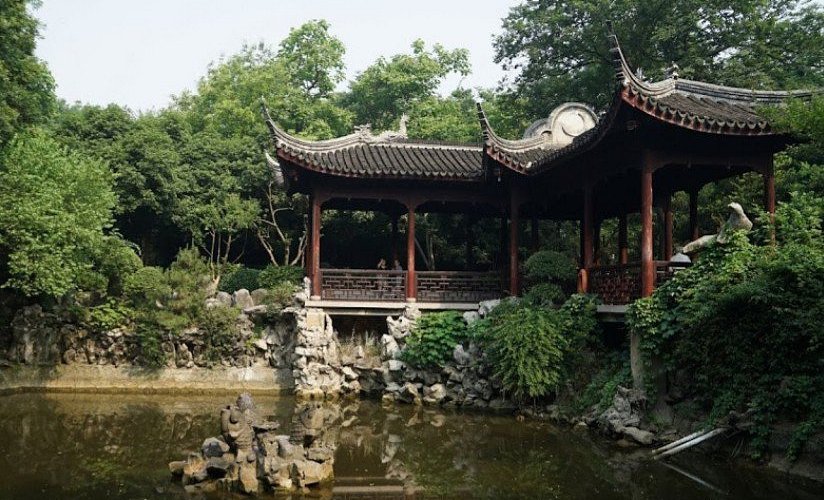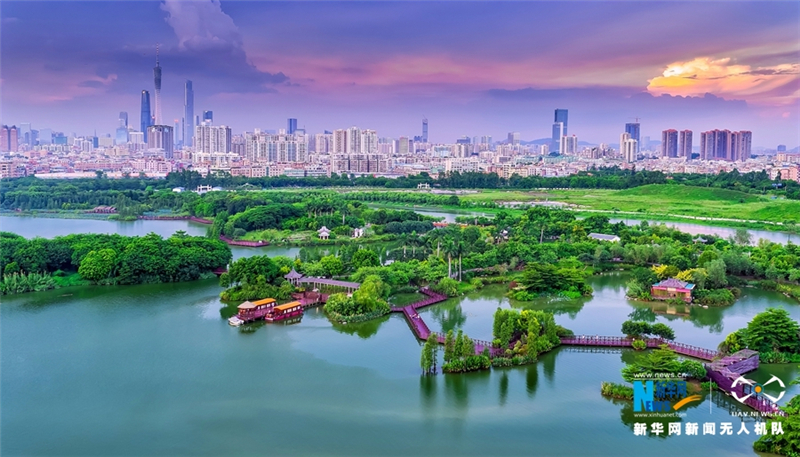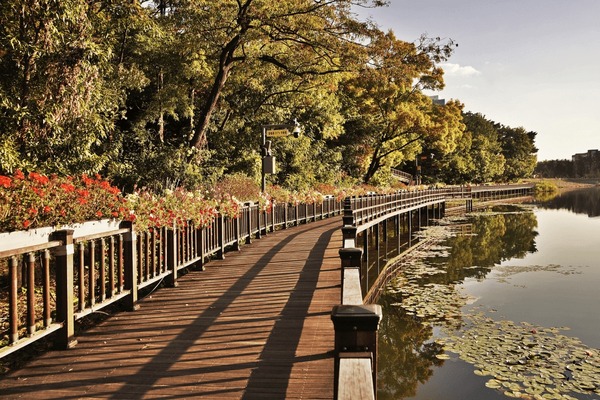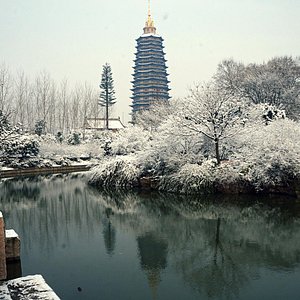The Definitive Guide to Exploring Dongpo Park: Nature, History, and Art

An Essential Guide to Visiting Dongpo Park
Nestled along the tranquil banks of the Grand Canal in Changzhou, Dongpo Park (东坡公园) is a verdant oasis that beautifully blends history, nature, and culture. One of its most unique features is the enchanting sight of ancient trees mingling with contemporary sculptures, creating a picturesque landscape that invites leisurely exploration and reflection. With each path you wander, you’ll discover a rich tapestry of gardens, historic structures, and serene waterways, all dedicated to the revered poet and statesman Su Dongpo, after whom the park is named.
This essential guide will lead you through the park’s captivating highlights, including the historic Academy, the stunning sculptures that dot the landscape, and the best spots for a peaceful boat ride. Whether you’re seeking a tranquil escape from the bustling city or an immersive cultural experience, our guide will ensure you make the most of your visit to Dongpo Park. From practical visiting tips to recommendations for nearby dining and attractions, prepare to uncover the charm of this urban sanctuary.
In This Guide
- An Essential Guide to Visiting Dongpo Park
- The Rich History and Legends of Dongpo Park
- Main Highlights: What You Absolutely Can’t Miss
- Planning Your Visit: A Practical Guide
- Tickets: Prices, Booking, and Tips
- How to Get There: A Complete Transportation Guide
- Local Cuisine and Accommodation Nearby
- Frequently Asked Questions
- Final Thoughts on Your Trip
The Rich History and Legends of Dongpo Park
A Tapestry of Time: The History of Dongpo Park
Nestled within the vibrant city of Changzhou, Dongpo Park (东坡公园) stands as a testament to the rich cultural heritage of the region. This lush oasis, named after the revered Song Dynasty poet Su Dongpo, not only offers stunning landscapes but also serves as a historical canvas that narrates tales of art, literature, and local legends.
The Legacy of Su Dongpo
Su Dongpo, also known as Su Shi, was a polymath of the 11th century, recognized for his profound contributions to poetry, painting, and calligraphy. His connection to the park is deeply entrenched in local lore, with many believing that he often visited this very spot to find inspiration among the serene surroundings. The park is adorned with statues and inscriptions celebrating his legacy, making it a pilgrimage site for those who admire his artistry and philosophy.
The Park’s Foundations
Dongpo Park was established during the late Qing Dynasty, around the 19th century, reflecting the classical garden styles of the era. Originally, it served as a retreat for scholars and literati who sought to escape the hustle and bustle of city life. Over the years, it has evolved into a public park, opening its gates to visitors from all walks of life, eager to experience its tranquility and beauty.
Architectural Wonders and Cultural Significance
One of the park’s notable features is the ancient academy, which has stood the test of time. This structure is a nod to the Confucian tradition, emphasizing education and moral integrity. The academy once served as a hub for scholarly activities and gatherings, where intellectuals would come together to discuss philosophy and literature. Today, it remains a vital part of the park’s allure, offering a glimpse into the scholarly pursuits of past generations.
Legends of the Moonlit Waters
Among the captivating legends associated with Dongpo Park is the tale of a moonlit boat ride. It is said that on tranquil nights, if one drifts along the river that winds through the park, they may encounter the spirit of Su Dongpo himself. Locals recount stories of seeing his figure gliding across the water, pen in hand, composing poetry inspired by the shimmering moonlight. This enchanting narrative adds a layer of mystique to the park, drawing visitors who seek to experience a brush with history.
A Cultural Hub
Today, Dongpo Park serves not only as a peaceful retreat but also as a cultural hub for festivals and events that celebrate the arts. The park often hosts poetry recitals, traditional music performances, and art exhibitions, fostering a community that honors its historical roots while embracing contemporary expressions of creativity. The blend of old and new creates an atmosphere where history is not merely preserved but actively lived.
Conclusion: A Journey Through Time
As you stroll through Dongpo Park, take a moment to reflect on the layers of history and legend that envelop you. From the legacy of Su Dongpo to the whispers of ancient scholars, this park is more than just a collection of beautiful landscapes; it is a living narrative that invites you to connect with the past. Whether you are a lover of literature, an admirer of nature, or simply in search of tranquility, Dongpo Park offers an enriching experience that lingers long after your visit.

Dongpo Park.
Main Highlights: What You Absolutely Can’t Miss
Tranquil Riverfront Walks
Strolling along the serene riverbanks of Dongpo Park is a must. The paths are lined with lush greenery and beautiful landscaping, providing a peaceful escape from the hustle and bustle of city life. As you meander through the park, take a moment to appreciate the artistic statues that dot the landscape. For the best experience, visit during the evening when the park is softly illuminated, creating a magical atmosphere perfect for a romantic walk or quiet reflection.
The Historic Academy
At the heart of Dongpo Park lies the old Academy, a cultural gem that offers a glimpse into the region’s rich educational history. Wander through its ancient halls and admire the traditional architecture that has stood the test of time. Make sure to take your time here, as the intricate details and serene environment invite contemplation. Guided tours are available if you wish to delve deeper into the Academy’s storied past.
Scenic Boat Rides
Don’t miss the chance to experience a boat ride on the river. This leisurely trip offers a unique perspective of the park and its surroundings. As you glide through the water, take in the panoramic views of Dongpo Park’s lush landscapes and charming bridges. It’s a perfect way to unwind after exploring the park on foot. Be sure to check the boat schedule ahead of time to ensure availability.
Lush Flower Gardens
Visit during spring for a breathtaking display of blooming flowers that transform the park into a vibrant tapestry of colors. The gardens are meticulously maintained and perfect for photography enthusiasts. Whether you prefer to capture the beauty of the blossoms or simply enjoy a picnic among the flowers, this area is a highlight that shouldn’t be missed. Bring your camera for stunning shots!
Peaceful Pavilions
Scattered throughout Dongpo Park are picturesque pavilions that invite you to pause and soak in the tranquility of your surroundings. These charming structures offer shaded spots to relax and enjoy a moment of peace. They are also great for people-watching, as locals often gather here to socialize or practice tai chi in the early mornings. Bring a book or simply enjoy the ambiance as you take a break from exploring.
Cultural Events and Performances
Depending on the time of your visit, you might be lucky enough to catch a cultural performance or community event held in the park. These gatherings often showcase local music, dance, and traditional arts, providing an immersive experience into the local culture. Check local listings for schedules or inquire at the park entrance about any events happening during your stay.
Family-Friendly Play Areas
For those traveling with children, Dongpo Park offers several play areas that cater to families. These spaces are equipped with modern play structures and are designed to ensure that kids can enjoy their time outdoors while parents relax nearby. The park’s family-friendly atmosphere makes it an ideal spot for a day out, so pack a picnic and enjoy a fun-filled afternoon!

Dongpo Park.
Planning Your Visit: A Practical Guide
Best Time to Visit
Dongpo Park is a year-round destination, but the best times to visit are during the spring (April to June) and autumn (September to November). During these months, the weather is mild, making it perfect for leisurely strolls. Spring brings vibrant blooms, while autumn showcases stunning foliage. Summer can be quite hot and humid, while winter, although less crowded, may offer a quieter experience with the possibility of light snow.
Recommended Itinerary
Morning:
– Start your day early with a leisurely walk through the park to avoid the crowds and enjoy the serenity of the early hours.
– Visit the Dongpo Academy, where you can delve into the history of the famous poet Su Dongpo and explore the traditional architecture.
Afternoon:
– Enjoy a picnic by the riverside. Bring along some local snacks or visit a nearby café for a quick bite.
– After lunch, take a stroll along the scenic paths, stopping to admire the statues and gardens.
Evening:
– As dusk approaches, take a boat ride on the river for a different perspective of the park and its surroundings.
– Conclude your visit with a relaxing evening walk to appreciate the park’s beautiful lighting and ambiance.
Photography Tips
- Golden Hour: The best time for photography is during the golden hour—shortly after sunrise and before sunset. This lighting enhances the colors of the park’s landscapes and statues.
- Focus on Details: Capture close-up shots of the intricate details in the architecture and flora. The park is home to various flowers and plants that make for stunning macro photography.
- Experiment with Angles: Utilize the winding paths and bridges to create dynamic compositions. Don’t hesitate to shoot from different angles to capture the park’s beauty.
- Night Photography: If you’re visiting in the evening, try your hand at night photography. The park is well-lit, and the reflections on the river can create enchanting images.
What to Wear
- Comfortable Shoes: As you’ll be walking a lot, wear comfortable shoes suitable for walking on varied terrain.
- Layered Clothing: The temperature can fluctuate, especially in spring and autumn. Dress in layers to adapt to changing weather conditions.
- Sun Protection: If visiting in summer, don’t forget sunscreen, sunglasses, and a hat to protect yourself from the sun.
- Light Jacket: If you plan to stay for the evening, bring a light jacket, as it can get cooler by the river.
Insider Tips
-
Free Entry: Dongpo Park does not charge an entry fee, making it an excellent option for budget travelers. Take advantage of this by visiting multiple times to explore different areas.
-
Local Cuisine: Don’t miss the chance to try local snacks from vendors around the park. The area offers delicious street food that will enhance your cultural experience.
-
Cultural Events: Keep an eye out for cultural events and performances that may occur during your visit. These can provide a unique glimpse into local traditions.
-
Visit Nearby Attractions: Combine your trip to Dongpo Park with visits to nearby attractions like the Tianning Temple and Hongmei Park, both within walking distance.
-
Bring a Book: The tranquil environment makes it a perfect spot to unwind with a good book. Find a quiet bench and immerse yourself in your favorite novel while enjoying the park’s peaceful atmosphere.
With this guide in hand, your visit to Dongpo Park is sure to be a memorable and enriching experience!

Dongpo Park.
Tickets: Prices, Booking, and Tips
When planning your visit to Dongpo Park in Changzhou, it’s important to be informed about ticket options, pricing, and tips for a smooth experience. The park offers a delightful escape into nature and history, and understanding the logistics can enhance your visit.
Ticket Information
| Ticket Type | Price (CNY) | Includes |
|---|---|---|
| Adult Admission | Free | Access to all park areas |
| Boat Ride | 20 | Scenic boat ride along the river |
Booking Details
- Admission: Entry to Dongpo Park is free for all visitors, allowing you to explore the lush landscapes, historical sites, and beautiful sculptures at no cost.
- Boat Rides: For those looking to enjoy a unique perspective of the park, boat rides are available for 20 CNY. It’s recommended to book your boat ride in advance, especially during peak seasons, to secure your spot and avoid disappointment.
Tips for a Great Visit
-
Plan Ahead: While entry is free, boat rides can fill up quickly. It’s advisable to book your tickets in advance, particularly during weekends and holidays when the park attracts larger crowds.
-
Visit During Off-Peak Hours: To enjoy a more peaceful experience, consider visiting early in the morning or later in the afternoon.
-
Check Operating Hours: Dongpo Park is open daily from 5:30 AM to 6:30 PM. Ensure you arrive with enough time to explore before closing.
-
Explore Nearby Attractions: After your visit to Dongpo Park, take the opportunity to explore nearby attractions such as Tianning Temple or Hongmei Park, both of which are within walking distance.
By keeping these details in mind, your trip to Dongpo Park can be a memorable and enjoyable experience.
How to Get There: A Complete Transportation Guide
Your Comprehensive Guide to Reaching Dongpo Park
Dongpo Park, a serene oasis in Changzhou, is easily accessible from various locations, making it a must-visit for international travelers. Below is a detailed transportation guide to help you navigate your way to this beautiful park and explore its scenic surroundings.
From the Nearest Major City: Shanghai
By Train:
The fastest way to reach Changzhou from Shanghai is by high-speed train.
– Duration: Approximately 1 to 1.5 hours.
– Cost: Tickets typically range from ¥75 to ¥150 (around $11 to $22) depending on the train class.
– Frequency: Trains run frequently throughout the day, with departures from Shanghai Hongqiao Railway Station.
By Bus:
If you prefer a more budget-friendly option, long-distance buses are available.
– Duration: About 2.5 to 3 hours.
– Cost: Tickets are usually around ¥60 (approximately $9).
– Departure Point: Buses leave from various stations in Shanghai, including the Shanghai South Bus Station.
By Car:
Renting a car or using a ride-hailing service can also be a convenient option.
– Duration: Around 2 hours, depending on traffic.
– Cost: Rental prices vary, but expect to pay around ¥300 per day (approximately $45), excluding fuel.
Arriving in Changzhou
Once you arrive in Changzhou, getting to Dongpo Park is straightforward.
By Public Transport:
– Metro: Take Line 1 to the “Tianning Temple” station. From there, it’s a short walk to the park.
– Bus: Several local buses connect to Dongpo Park. Bus numbers 22, 27, and 35 stop nearby. The fare is around ¥2 (about $0.30).
By Taxi:
Taxis are readily available and provide a quick way to reach the park.
– Cost: A taxi ride from the Changzhou Railway Station to Dongpo Park will cost approximately ¥15 to ¥25 (roughly $2 to $4), depending on traffic.
Getting Around the Scenic Area
Dongpo Park is designed for leisurely exploration, with well-maintained paths and clear signage. Here are some tips for getting around:
- Walking: The best way to enjoy the park’s beauty is on foot. Wander along the riverside paths and admire the statues and landscaping at your own pace.
- Bicycle Rentals: If you prefer a quicker way to see more of the park, consider renting a bicycle. Many local shops offer rentals for around ¥20 per hour (about $3).
- Boating: For a unique experience, take a boat ride on the river. Prices vary, but expect to pay around ¥30 for a round trip (approximately $4.50).
Tips for a Smooth Journey
- Language: While some signs are in English, having a translation app can help you navigate more easily.
- Cash: Although many places accept digital payments, keep some cash handy, especially for small vendors and local transport.
- Timing: Aim to visit during the early morning or late afternoon when the park is less crowded and the lighting is perfect for photos.
By following this guide, you’ll be well-equipped to enjoy your visit to Dongpo Park and all the tranquility it has to offer. Safe travels!

Dongpo Park.
Local Cuisine and Accommodation Nearby
When visiting Dongpo Park, you’ll not only enjoy its serene landscapes and historical significance but also have the opportunity to indulge in the rich culinary tradition of Changzhou. After a leisurely stroll through the park, consider treating yourself to some local delicacies and finding a comfortable place to rest your head nearby.
Culinary Delights
-
Changzhou Noodle Soup (常州面条)
A local favorite, this dish features hand-pulled noodles served in a rich broth, often accompanied by tender slices of beef or pork, seasonal vegetables, and a dash of chili oil for an extra kick. It’s the perfect comfort food after a day of exploring. -
Eight Treasure Duck (八宝鸭)
A traditional dish that showcases the culinary artistry of the region, Eight Treasure Duck is stuffed with a mixture of glutinous rice, mushrooms, chestnuts, and various spices, then slow-cooked to perfection. The result is a succulent dish bursting with flavor, often enjoyed during special occasions. -
Sweet and Sour Mandarin Fish (糖醋鲤鱼)
This visually appealing dish features a whole fish that is deep-fried until crispy and then drenched in a glossy sweet and sour sauce. The contrast of flavors and textures makes it a must-try for any visitor, and it’s often presented beautifully for a memorable dining experience. -
Jiangsu-style Dumplings (江苏水饺)
A staple in local cuisine, these dumplings are filled with minced pork, shrimp, and chives, seasoned to perfection and served with a vinegar dipping sauce. They are a delightful snack or appetizer, perfect for enjoying in the casual atmosphere of a local eatery.
Places to Stay
-
Luxury: Changzhou Marriott Hotel
For those seeking a luxurious retreat, the Changzhou Marriott Hotel offers plush accommodations with stunning views of the city. Enjoy top-notch amenities, including a heated indoor pool, a spa, and multiple dining options, making it an ideal choice for a relaxing getaway. -
Boutique: The Grand Hotel Changzhou
This stylish boutique hotel features unique designs and personalized service. Located conveniently close to Dongpo Park, it provides guests with a cozy atmosphere and easy access to local attractions, making it a great base for exploration. -
Budget: 7 Days Inn Changzhou
For travelers watching their wallets, 7 Days Inn offers clean, comfortable rooms at an affordable price. With friendly staff and convenient locations near public transportation, it’s a practical choice for those who want to experience Changzhou without breaking the bank.
Whether you’re savoring local dishes or resting in comfortable accommodation, your visit to Dongpo Park will be filled with delightful experiences that showcase the charm of Changzhou.

Dongpo Park.
Frequently Asked Questions
-
Is Dongpo Park suitable for children and the elderly?
Absolutely! Dongpo Park is an ideal destination for families and visitors of all ages. The park features well-maintained paths that are easy to navigate, ensuring accessibility for elderly visitors and families with children. There are also plenty of open spaces and playgrounds where kids can run and play. -
Are there English signs and information available in the park?
Yes, Dongpo Park is increasingly accommodating for international travelers. While most signs are primarily in Chinese, many areas do feature English translations, especially at key attractions and points of interest. Additionally, park staff are often helpful and can assist with directions or information if needed. -
How much time should I plan to spend at Dongpo Park?
Plan to spend approximately 2 to 4 hours exploring Dongpo Park. This time allows you to leisurely stroll through the beautiful landscapes, visit the old Academy, and take in the various statues and smaller buildings. If you wish to enjoy a boat ride or have a picnic, consider extending your visit. -
What are the park’s opening hours?
Dongpo Park is open daily from 5:30 AM to 6:30 PM. This schedule provides ample time for morning walks or afternoon visits. Be sure to check the weather and arrive early for the best experience! -
Is there an entrance fee to visit Dongpo Park?
No, entrance to Dongpo Park is free! You can enjoy the beautiful surroundings and facilities without any admission fees, making it an excellent option for budget-conscious travelers. -
What should I wear when visiting Dongpo Park?
Comfortable clothing and walking shoes are highly recommended, as you’ll likely be walking for an extended period. If you visit during the warmer months, consider lightweight fabrics; during the cooler months, layering is a good idea. Don’t forget sunscreen and a hat if you’re visiting during the day! -
Are there any dining options available in or near Dongpo Park?
Yes, there are several dining options within walking distance of Dongpo Park. From local Chinese cuisine to cafes and international fare, you will find a variety of restaurants to choose from after your park visit. Some popular choices include Bifengtang and Porcellino Italian Restaurant. -
Is there public transportation available to get to Dongpo Park?
Yes, Dongpo Park is accessible via public transportation. Buses frequently service the area, and taxis are also readily available. If you’re staying nearby, consider walking to the park for a more enjoyable experience and to take in the local sights along the way.
Final Thoughts on Your Trip
As your adventure in Dongpo Park comes to a close, take a moment to reflect on the serene beauty and rich cultural tapestry this enchanting oasis offers. From leisurely strolls along the riverbank illuminated by soft evening lights to peaceful explorations of its historic grounds, every corner of the park invites you to slow down and embrace tranquility. Whether you marveled at the intricate statues, reveled in the blossoming flowers of spring, or enjoyed a soothing boat ride, these moments are the essence of what makes Dongpo Park a cherished retreat in Changzhou.
Don’t forget to capture the memories created here—each snapshot is a reminder of the harmony between nature and history that Dongpo Park embodies. As you depart, let the park’s serene spirit linger in your heart and inspire you to seek out beauty and peace in your future travels. May this experience serve as a gentle reminder that sometimes, the best journeys are those that lead us to moments of quiet reflection and joy amidst nature’s embrace. Safe travels!